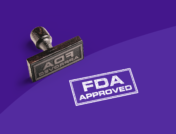What is herpes? | How common is herpes? | Herpes stats worldwide | Herpes stats in the U.S. | Herpes stats by age | Herpes stats by sex | Herpes stats by race and ethnicity | Common complications | Costs | Treatment | FAQs | Research
Herpes is a virus that can spread through kissing, genital contact, and sharing personal objects. It never leaves the body and sometimes flares up and causes itching, tingling, and burning.
Preventive measures, such as using condoms, avoiding douching, and limiting the number of sex partners, may help reduce the risk of transmission.
In this article, we provide information on the prevalence of herpes among different populations based on sex, ethnicity, and age. We also look at the symptoms that the infection may cause and how sexual activity can increase the spread of herpes.
What is herpes?
Herpes simplex is a virus that causes painful blisters, ulcers, and sores on the mouth or genital area. It is a lifelong, incurable infection, but oral medications and creams can help relieve and prevent outbreaks.
There are two types of herpes simplex:
- Herpes simplex virus type 1 (HSV-1): causes oral herpes and affects the skin surrounding the mouth, but it can also cause symptoms in the genital area
- Herpes simplex virus type 2 (HSV-2): causes genital herpes, a common sexually transmitted infection (STI)
People experiencing their first episode of herpes infection may develop:
- A sore throat
- Fever
- Body aches
- Swollen lymph nodes
To reach a diagnosis, healthcare providers may perform a physical exam and look closely at your sores. They may also take a sample to test it in a laboratory or order a blood test to rule out other infectious diseases.
There are also at-home tests that people can use to diagnose herpes. Lauren Thayer, a registered nurse at HealthCanal, states, “While an at-home herpes test is not likely going to be as accurate as a full in-person blood test, it is still a good option for someone afraid or hesitant to visit the doctor or lab in person for testing. There are quite a few options for at-home test kits that can be purchased online and completed at home.”
How common is herpes?
- Most herpes infections do not cause symptoms. However, some people may have painful blisters that reappear multiple times. (WHO, 2023)
- HSV-2 infections are more likely to affect women than men. (CDC, 2021)
- Research estimates that 50–80% of adults in the United States have oral herpes. (John Hopkins Medicine, 2023)
- Genital herpes infections occur in 1 out of 6 people in the U.S. between the ages of 14 and 49. (John Hopkins Medicine, 2023)
Herpes statistics worldwide
- Around 3.7 billion people around the world who are under the age of 50 years have HSV-1 infections. (WHO, 2023)
- Around 491 million people ages 15 to 49 have HSV-2 infections. (WHO, 2023)
- It is estimated that around 187 million people, which is equivalent to 5% of the world’s population, had an episode of herpes-related genital ulcer disease in 2016. (WHO, 2020)
Herpes statistics in the United States
- Researchers report that more than 50% of American adults have oral herpes. (ASHA, 2023)
- A lot of people with genital herpes do not know that they have the condition. A clinical diagnosis has not occurred in about 87% of those ages 14 to 49 years who have HSV-2. (CDC, 2021)
- In 2018, it was estimated that there were 572,000 new genital herpes infection cases in the U.S. among those between the ages of 14 and 49 years. (CDC, 2022)
- The National Library of Medicine states that 1 in 1,000 newborns in the U.S. receive a diagnosis of neonatal herpes infection. The risk for this increases if the mother has developed genital HSV infection during pregnancy and passes it on to the fetus. (NLM, 2023)
- There are an estimated 45 million adults living with HSV-2 in the U.S. (NLM, 2023)
Herpes statistics by age
- Neonatal herpes is rare, and less than 0.1% of babies born in the U.S. each year have this condition. Research shows that 20–25% of pregnant women have genital herpes, but in most cases, it does not affect the fetus. (ASHA, 2023)
- Herpes is a lifelong infectious disease. Its prevalence increases as people age, but new cases occur mostly among adolescents. (WHO, 2023)
- In 2016, around 3.7 billion people worldwide under the age of 49 years had HSV-1. (WHO, 2020)
- Between the ages of one and five years, most people have been exposed to HSV. (HealthyChildren.org, 2017)
Herpes statistics by sex
- Researchers note that 1 in 5 women and 1 in 10 men ages 14 to 49 years have genital herpes. (Office on Women’s Health, 2023)
- Women are more likely to be infected with HSV-2, and their risk of developing it increases in relation to the number of sexual relationships they have. The virus can spread through sexual contact more easily from men to women than from women to men. (NLM, 2023)
Herpes statistics by race and ethnicity
- HSV-2 infectious rates are higher among non-Hispanic African Americans than non-Hispanic White people. (NLM, 2023)
- The Office on Women’s Health estimates that 1 in 2 African American women develop HSV-2 between the ages of 14 and 49 years. (Office on Women’s Health, 2023)
- Half of STI cases in the U.S. occur in young adults ages 15 to 24 years. (Journal of Adolescent Health, 2017)
- STI rates are lower among the Asian adolescent population. This could be because they are usually understudied in sexual health studies. (Journal of Adolescent Health, 2017)
Herpes and overall health
Herpes can affect people’s quality of life and cause complications:
- HSV-2 infections can increase people’s risk of getting an HIV infection, and they are also more likely to spread HIV infection. (WHO, 2023)
- People with a weak immune system or advanced HIV may have more frequent and severe herpes symptoms than those who are not immunocompromised. (WHO, 2023)
- Genital HSV infections can cause yeast infections and bladder problems, especially in those experiencing it for the first time. Later outbreaks are usually less severe, and people may experience mild symptoms, so they may not need any medications. (NLM, 2018)
The cost of herpes
- The Centers for Disease Control and Prevention notes that, in 2018, the direct lifetime medical costs for new STI cases amounted to nearly $16 billion. (CDC, 2021)
- In 2019, genital herpes was responsible for more than $800 million in treatment costs and productivity losses. (Harvard, 2022)
- The lifetime direct medical costs of genital herpes in people ages 15 to 49 years were around $972 per treated case between 2010 and 2018. (Sexually Transmitted Diseases, 2021)
Causes of herpes
Herpes occurs when people get an infection from the herpes simplex virus (HSV). HSV-1 infections develop through close contact, such as kissing, sharing personal objects, or touching someone’s skin when they already have herpes.
Genital herpes can spread through genital contact or when people have a cold sore and perform oral sex, which can spread the infection to the genital area.
Dermatologists state that some people are more prone to getting HSV-2, including those who:
- Have multiple sexual partners
- Have an STI
- Have a reduced immune function
When a person gets infected with the herpes virus for the first time, the virus does not leave the body, but it stays there for the rest of their life. It can become active and cause an outbreak. Outbreaks are most common when someone is menstruating, stressed, or has exposed their skin to the sun.
Herpes prevention
Some activities can help people lower their risk of getting genital herpes. These include:
- Using condoms when engaging in sexual activity
- Limiting the number of sexual partners
- Getting tested for STIs
- Avoiding douching, as it can cause an overgrowth of harmful bacteria
It may be best to avoid having sex if someone is experiencing an outbreak, as condoms may not cover all herpes sores. Healthcare providers can help people recognize the symptoms when they are about to have a flare-up, such as burning, itching, and tingling.
People should wash their hands with soap and water if they touch their herpes sores. This helps reduce the risk of transmission to others or other body areas.
Thayer explains, “Infants can also be infected while passing through the birth canal during labor and delivery, which is the most common method of infection, or after birth if they are being kissed or having contact with someone who currently has herpes mouth sores.”
Treating herpes
Herpes is not curable, but antiviral medications, such as acyclovir, famciclovir, and valacyclovir, can help shorten or control outbreaks.
- Acyclovir: An oral medication that reduces symptom severity and prevents new herpes sores from developing. Healthcare providers may suggest taking it up to five times per day, and they may prescribe its liquid form if someone has trouble swallowing pills.
- Famciclovir: Available as a tablet and can be a good treatment option for people who have HIV and have developed herpes.
- Valacyclovir: A tablet that treats cold sores around the mouth and genital herpes outbreaks. It also helps reduce the number of future episodes.
Sometimes creams can help relieve itching, burning, and tingling.
Research shows that home remedies can also help treat a herpes skin rash:
- Cold compresses: Applying a cold compress to the affected area for 5 to 10 minutes every hour can help reduce swelling and tingling.
- Honey: People may apply kanuka honey directly to their skin to treat oral herpes. One study indicates that it can take nine days for sores to heal with honey and eight days with antiviral creams.
- Garlic: It has antiviral properties, which may help prevent viral infections by stopping the virus from entering or replicating inside the cells. However, using raw garlic on the skin can cause burns.
- Essential oils: Some essential oils, such as garden thyme, rosemary, and Eucalyptus caesia, can reduce viral infection spread of HSV-1 cells.
Herpes questions and answers
What percentage of the population has herpes?
Globally, around half a billion people have genital herpes, and several billion have oral herpes. Around 50–80% of adults in the U.S. have oral herpes.
How common is a herpes outbreak?
A lot of people with HSV-1 or HSV-2 infections do not have any symptoms. Sometimes, though, herpes can cause outbreaks, leading to blisters, flu-like symptoms, and urination problems.
What race has the highest incidence of herpes?
Non-Hispanic African Americans have the highest incidence of HSV-2 infection cases when compared to non-Hispanic Whites and Mexican Americans.
Sources
- 1 in 5 people in the U.S. have a sexually transmitted infection, Centers for Disease Control and Prevention (CDC) (2021)
- Characterization of sex differences in ocular herpes simplex virus 1 infection and herpes stromal keratitis pathogenesis of wild-type and herpesvirus entry mediator knockout mice, mSphere (2019)
- Cold sores in children: About the herpes simplex virus, Healthychildren.org (2017)
- Genital herpes, Office on Women’s Health (2023)
- Genital herpes – CDC basic fact sheet, CDC (2022)
- Genital herpes – CDC detailed fact sheet, CDC (2021)
- Genital herpes linked with economic, quality of life losses in low- and middle-income countries, Harvard (2022)
- Genital herpes: Overview, National Library of Medicine (NLM) (2018)
- Genital herpes – women’s health guide, U.S. Department of Veterans Affairs (2015)
- Herpes: Fast facts, American Sexual Health Association (ASHA) (2023)
- Herpes: HSV-1 and HSV-2, John Hopkins Medicine (2023)
- Herpes simplex type 1, NLM (2023)
- Herpes simplex type 2, NLM (2023)
- Herpes simplex virus, World Health Organization (WHO) (2023)
- Herpes simplex: Who gets and causes, American Academy of Dermatology Association (2023)
- How is herpes prevented? Planned Parenthood (2023)
- Lifetime medical costs of genital herpes in the United States: Estimates from insurance claims, Sexually Transmitted Diseases (2021)
- Massive proportion of world’s population are living with herpes infection, WHO (2020)
- Oral & genital herpes, Planned Parenthood (2023)
- Racial/ethnic differences in young women’s health-promoting strategies to reduce vulnerability to sexually transmitted infections, Journal of Adolescent Health(2017)











